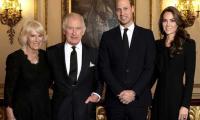The article below was written three years ago in response to the various versions of the anthem posted on social media by anyone who could sing, play an instrument, or make a video!
In my humble opinion, based on the anthem’s origin, facts and circumstances, the original version will be a ‘forever version’ when played instrumentally or sung vocally. Video versions will be novel presentations where a screen or digital platform is available for public viewing.
Every year when Pakistan’s Independence Day draws near, we get emotional, and rightly so, about our ‘one and only’ national anthem and, in our enthusiasm, create our versions of the sacred song to stake a claim in its hallowed history and bask in its glory.
Usually, it is the ever-energetic youth of our country, popular crooners, bands, instrumentalists, recording artists, digital experts and special-event planners who, out of exuberance, introduce multiple variations of the anthem to the delight of their ‘live and virtual’ audiences. It is a credit to their talent and patriotism that these warped versions – sung or played – are indeed beautiful.
So, here is my point, qualified and quantified: This day, August 14, 2019, the 72nd Independence Day of Pakistan, I came across numerous versions of the anthem on social media, as well as animated versions presented at special events, and thought it was necessary to throw light on some technical aspects and appropriate facts.
All variations of our national anthem are beautiful, but the original musically composed version can only be played instrumentally by a full component of a brass band when a variety of reed and blowing instruments, each playing its dedicated part, come together in a symphony to proclaim the masterful arrangement of the notator.
Therefore, it sounds musically correct when a military brass band of any country (and they don’t need to know the tune) reads the notated music on the sheets, and plays the parts as arranged by a skilful composer of orchestrated music. Recently, I heard the military bands of the US, Malaysia, and Turkey, play our national anthem correctly; neither did they know the words or the tune but played what was musically notated.
The music (complementing the composed tune) of our national anthem has been notated, separately, for each instrument of a brass band. When it is played together and ably conducted by a music director in the know-how of orchestral compositions, it harmonizes into a symphony that musically heralds our anthem. This is how it was composed and notated in 1949 and supposed to have been played, officially and for all time’s sake.
Countries don’t change ‘the music’ of anthems to suit their fantasy. Some adjustment in lyrics is possible; it is because the words and music of the anthem are sacred to the sovereignty of the land.
The instruments in a brass band ensemble of 50 musicians or more, include, trombone (2 or 4), trumpet (up to 12), cornet (up to 4), B-flat clarinet (6-8), E-flat clarinet (2-4), alto-saxophone (2-4), tenor-saxophone (2), French-horn (2), side-drums (up to 12), bass-drum (one) euphonium (2) and the tuba (one). Even the ‘triangle’ and the ‘cymbal’ must know when to strike. If you take away a notated part of any one instrument, there is no anthem, just a tune which anyone can strum, blow, serenade, hum, or whistle.
I played the tuba in a brass band and was responsible for its own notated part of the anthem. Therefore, I can say it confidently, in as much as anyone in a brass band who plays the same instrument would vouch, that if the tuba’s part is ‘not played’ – there is no anthem. Whenever our anthem is played by a brass band, I can literally hear the part of my instrument supporting the harmony and when required, leading the crescendo, like the trumpets which I am sure, everyone can hear.
This then, my friends, is the background of the music of the national anthem of Pakistan. I hope the real value and nuances of the music is understood in the right context and appropriately respected.
The writer is a freelance contributor.
This image shows Pakistan's Ayesha Rashid, who was recently given the heart of a 69-year-old brain-dead Indian patient...
A car is seen burning along a road as Pakistan Tehreek-e-Insaf party activists and supporters of former prime...
Students of the Church Mission School, located in the heart of Karachi’s old city area, brief a judge about the...
The National Electric Power Regulatory Authority headquarters can be seen in this picture released on November 4,...
Chinese President Xi Jinping and US President Joe Biden meet at the G20 leaders’ summit in Nusa Dua. — AFP/FileA...
Over the past few years, we have witnessed a complex and dynamic interplay between soft power and nation branding that...







